

Jodrell Effelsberg Westerbork Italy Parkes
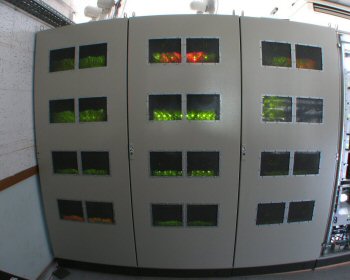
Jodrell Bank's COBRA Computer cluster, designed for coherent dedispersion of pulsar signals in real time.
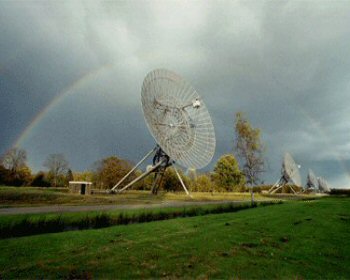
The Westerbork Synthesis Telescope (WSRT) is located in the north of the Netherlands and is run by ASTRON (www.astron.nl). It consists of 14 25m telescopes. For pulsar observations the telescopes are added together in phase and has the equivalent collecting area of a 94m single dish telescope. It can be used to observe at frequencies from 115 MHz all the way to 8 GHz
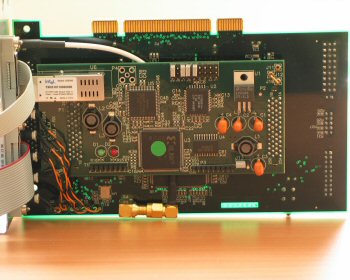
This image shows the two boards which accumulate and distribute the digital data coming from the WSRT telescope. Two polarisations are processed and distributed on each board and there is one board contained in each computer. The other board is responsible for carrying out the time synchronisation, conversion and distribution of the data. The total throughput of data of each board is 80 MBytes/s.
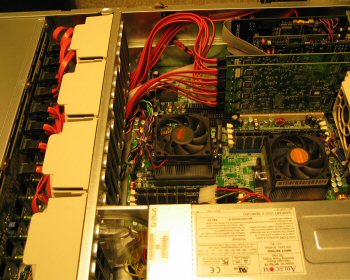
The new hardware developed for the PuMa II project. The card at the back of the picture was developed to be able to acquire and transfer to disk data with a bandwidth of 20 MHz. The data is then transferred either to a series of disks contained within the server or distributed directly to the processing nodes.
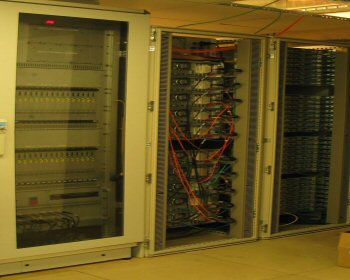
A total of 4 TBytes of disk are contained in each machine and there are a total of 8 machines, giving us the possibility of recording a total of 32 Tbytes of data and 160 MHz of bandwidth! The processing machines are capable of coherently dedispersing, that is accurately correcting for the effects of the interstellar medium on the pulses, all of this bandwidth in real, or very close to real, time, making this one of the best machines of its type in the world.
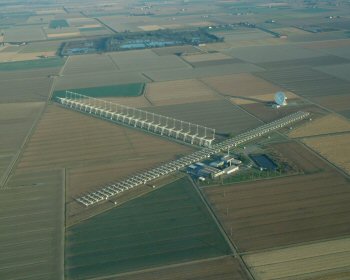
Aerial view of the Northern Cross radio telescope, near Bologna, Italy. The Italian Pulsar Group has largely used this instrument to observe radio pulsars. The observational activity included timing observations coordinated with the Compton Gamma Ray Observatory (CGRO), simultaneous single-pulse observations coordinated with the European partners, and pulsar searches.
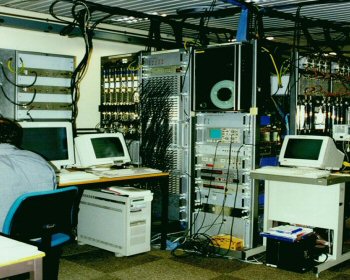
The pulsar data acquisition system built by the Italian group at the Northern Cross, near Bologna, in Italy.

In Sardinia, Italy, at 35 km North of the city of Cagliari, the Italians are building a new radio telescope, the Sardinia Radio Telescope (SRT), which will be commissioned in 2007. The Italian pulsar group is looking forward to use this facility to observe radio pulsars.